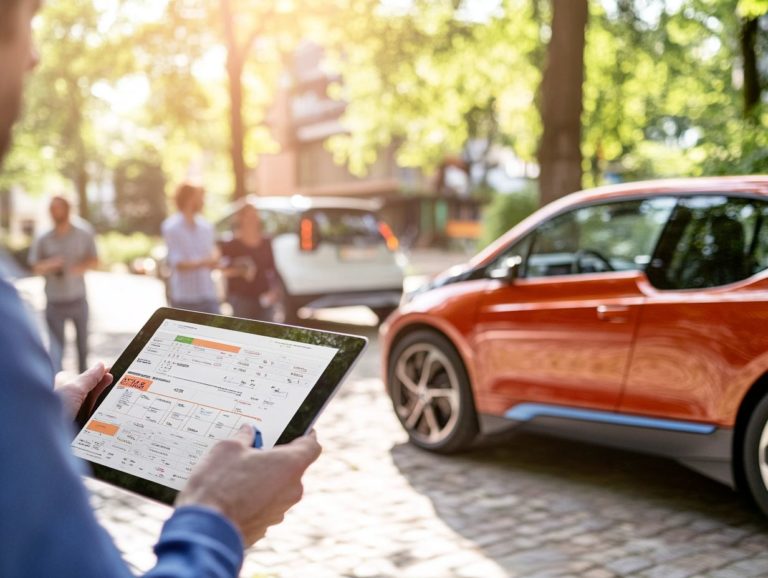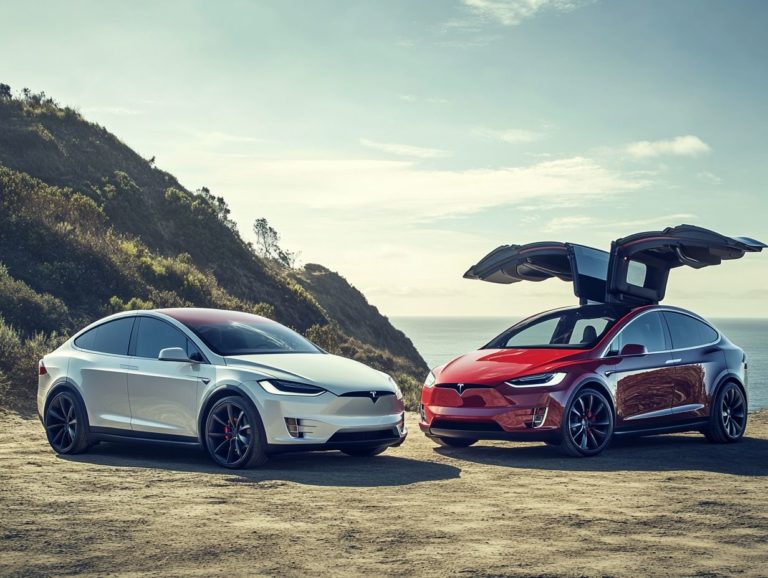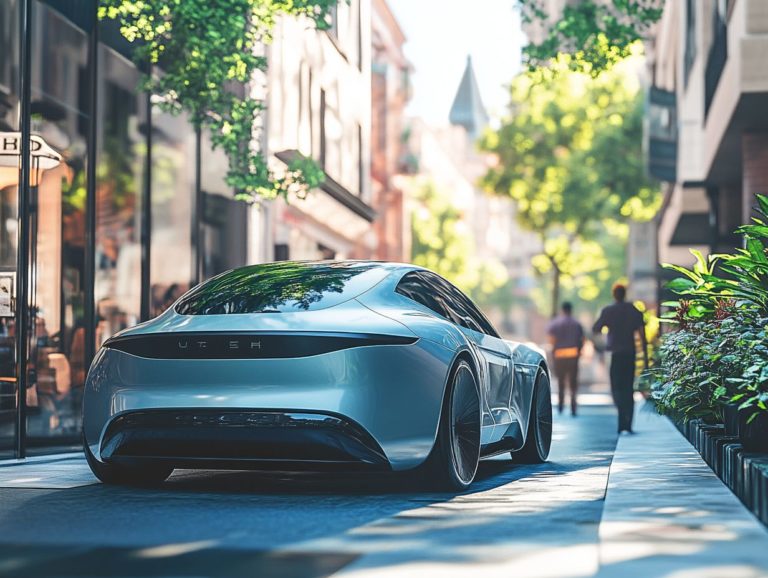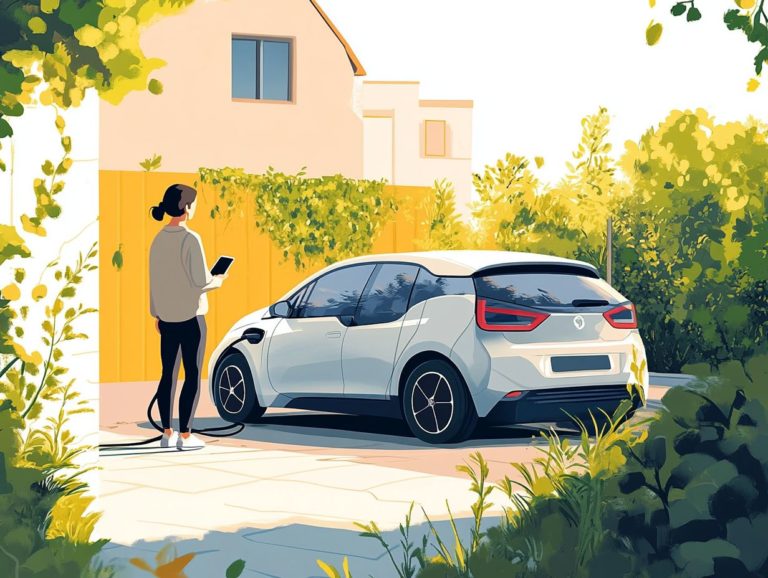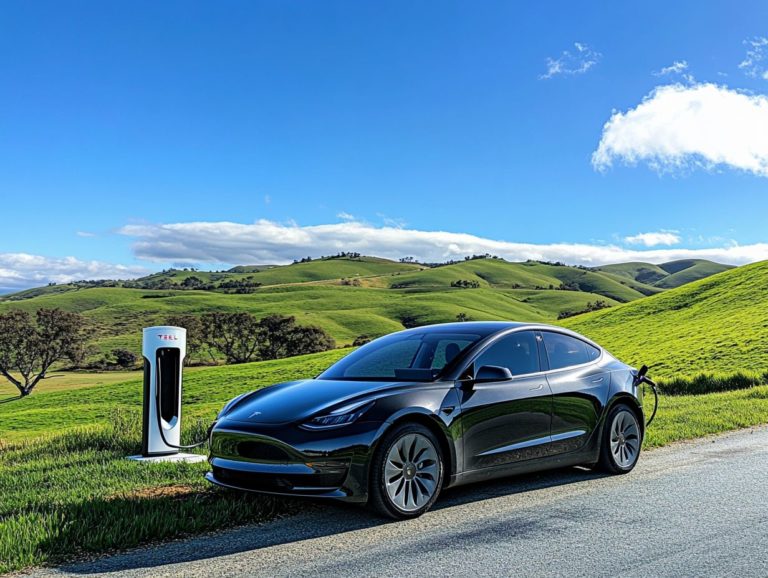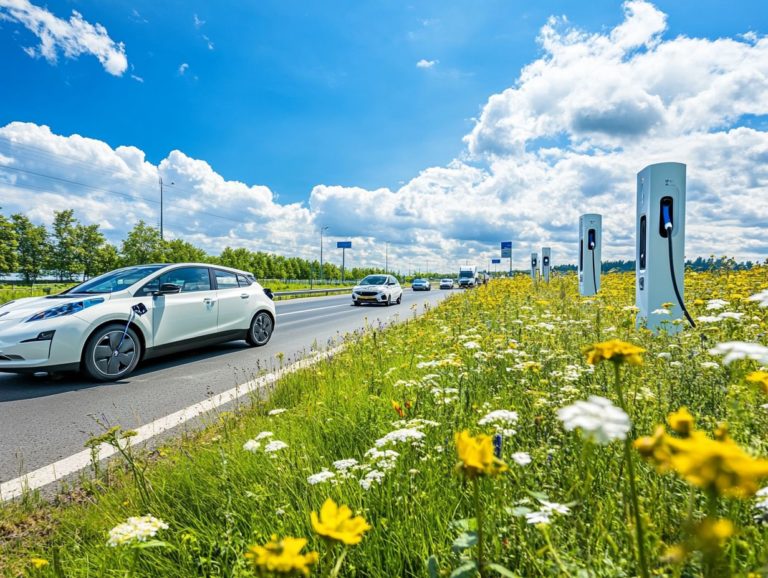5 Charging Solutions for Your Electric Vehicle
As electric vehicles (EVs) soar in popularity, grasping the variety of charging options available becomes essential for you as an EV owner.
This article delves into five pivotal charging solutions: home charging, public charging stations, workplace charging, portable charging, and solar charging. Each option comes with its own set of advantages and challenges, empowering you to make informed choices.
You ll learn how to select the right charging solution for your needs, the perks of owning your own charger, and savvy tips for saving money along the way. We will also explore the future of EV charging technology. Get ready to dive in and discover exciting ways to enhance your electric vehicle experience!
Contents
- Key Takeaways:
- 1. Home Charging
- 2. Public Charging Stations
- 3. Workplace Charging
- 4. Portable Charging Solutions
- 5. Solar Charging
- What Are the Different Types of Electric Vehicle Chargers?
- How to Choose the Right Charging Solution for Your Electric Vehicle?
- What Are the Benefits of Owning an Electric Vehicle Charger?
- What Are the Common Challenges with Electric Vehicle Charging?
- How Can You Save Money on Electric Vehicle Charging?
- What Is the Future of Electric Vehicle Charging Technology?
- Your Questions About Electric Vehicle Charging
- What are the different types of charging solutions available for electric vehicles?
- What is Level 1 charging and how does it work?
- How is Level 2 charging different from Level 1 charging?
- What is DC Fast Charging and how does it work?
- What is wireless inductive charging and how does it work?
- Can I charge my electric vehicle using solar energy?
Key Takeaways:
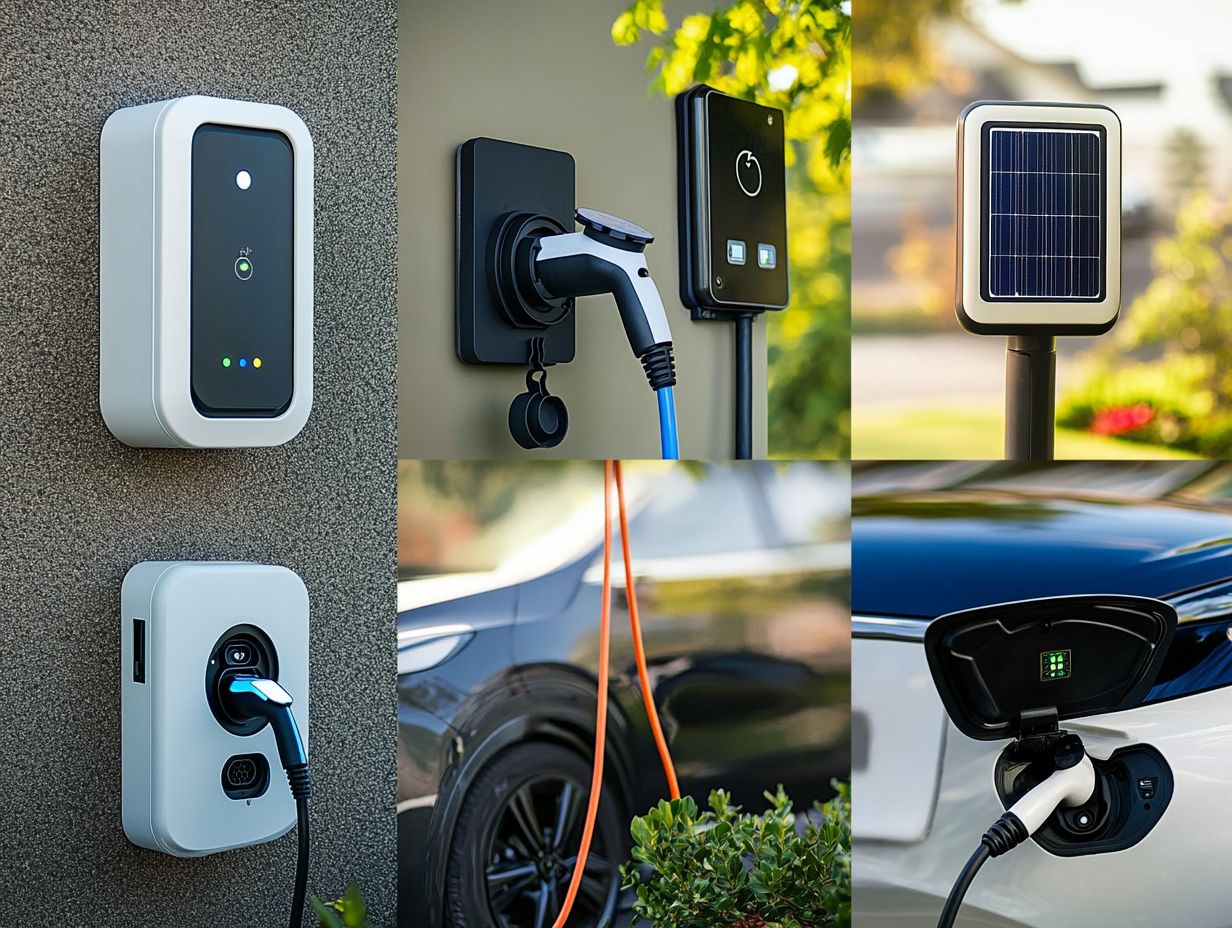
- Invest in a home charging solution for convenience and cost savings.
- Utilize public charging stations for longer trips and emergencies.
- Consider workplace charging for reliability during your workday.
1. Home Charging
Home charging is becoming an essential factor for you as you transition to electric vehicles, offering convenient and efficient charging solutions right at your doorstep. Understanding the reasons to consider an electric vehicle significantly enhances the practicality of adopting and using an EV in your daily life.
With a range of options available, such as Level 2 chargers and wallboxes, you can choose the system that best suits your energy consumption needs. Level 2 chargers offer faster charging speeds than standard home outlets. Wallboxes are compact charging units that can be mounted on a wall. These chargers enable faster energy replenishment, perfectly accommodating the specific requirements of your EV battery.
You can harness renewable energy sources for your home charging setup. This not only reduces your energy costs but also contributes positively to the environment.
As more households like yours integrate these systems, you effectively strengthen the overall charging infrastructure. Charging becomes not just convenient, but also a smart way to save money. Embrace an eco-friendly lifestyle and enjoy lower fuel costs!
2. Public Charging Stations
Public charging stations are pivotal in the electric vehicle ecosystem, granting you essential access to charging solutions while you re on the move. This convenience enhances the practicality and adoption of electric vehicles in both urban and rural settings.
These stations come in various forms, from standard Level 2 chargers to the speedy DC fast charging (DCFC) options, which provide quicker charging times compared to standard chargers, catering to your diverse needs and situations. With a plethora of charging connectors available, you can easily locate compatible solutions for your vehicle. Noteworthy networks like Tesla, Blink Charging, ChargePoint, BP Pulse, EVgo, and Allego have significantly expanded their reach, ensuring you have a wealth of options for recharging.
The increasing presence of these networks not only supports the growing number of electric vehicles on the roads but also alleviates range anxiety. This enables you to embark on longer journeys with total confidence.
3. Workplace Charging
Workplace charging is quickly becoming a crucial element of charging infrastructure, allowing you to charge your electric vehicle during work hours. This not only enhances the convenience of owning and operating an EV but also reinforces your commitment to sustainability.
As the appetite for electric vehicles continues to rise, you recognize the significance of incorporating charging solutions into your operations. By investing in both Level 2 and DC fast charging stations, you can meet the diverse needs of your employees, ensuring that everyone has access to the essential charging infrastructure.
Implementing energy management systems can further optimize the charging process, enabling you to manage energy consumption efficiently and curb costs. By providing these facilities, you not only elevate employee satisfaction and encourage greener commuting habits but also position your business as a forward-thinking organization dedicated to sustainability.
This proactive stance can attract eco-conscious customers and top-tier talent who share your values.
4. Portable Charging Solutions
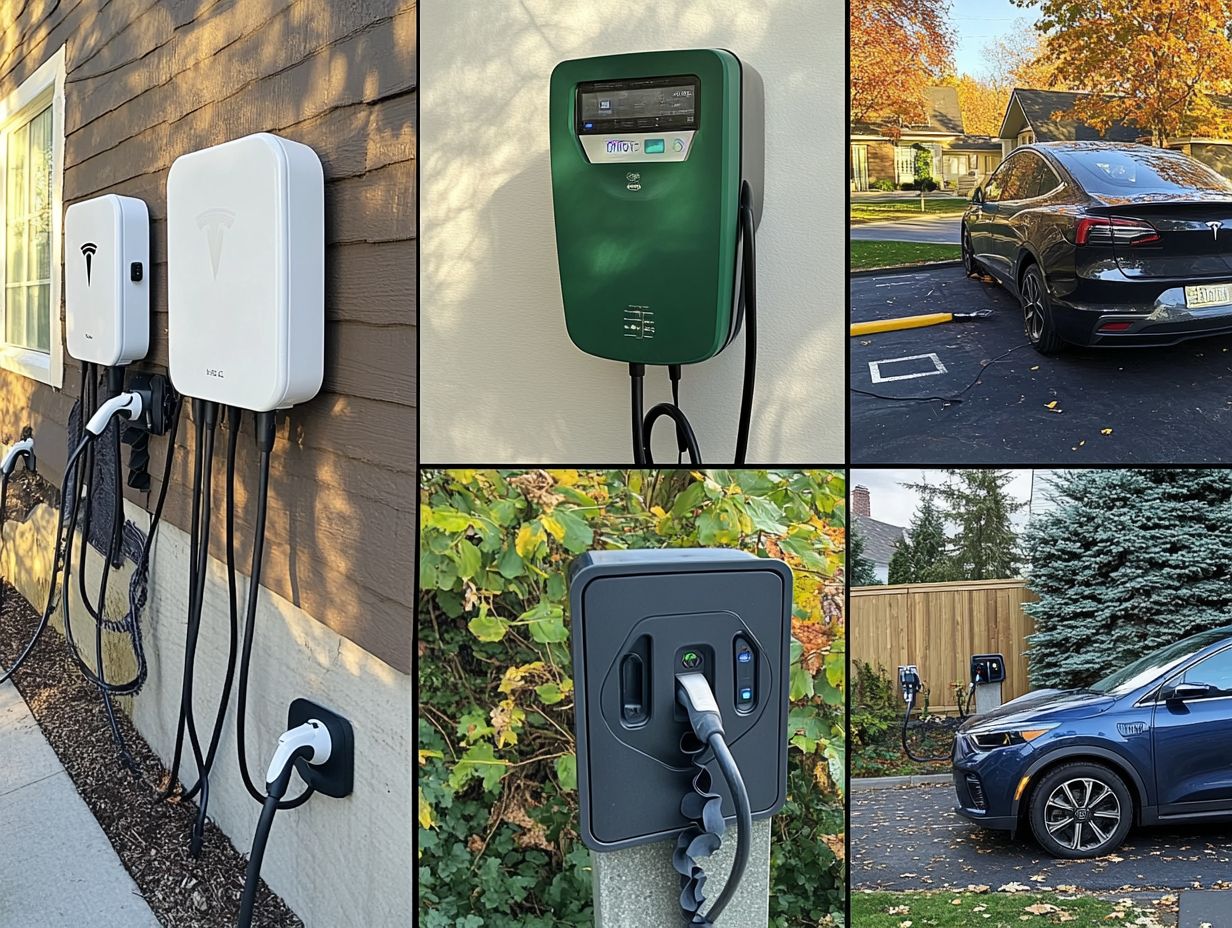
Portable charging solutions are rapidly gaining traction among EV drivers. They offer flexibility and convenience, especially when traditional charging stations are out of reach. To ensure you make the most of your charging experience, consider the must-have features in an EV charger.
This innovation significantly expands your options for charging electric vehicles while you’re on the move.
These solutions include a range of mobile chargers, from compact units tailored for personal use to more robust options capable of powering multiple vehicles at once. You’ll find that many of these portable chargers are compatible with various electric vehicle makes and models, serving as an essential backup during long road trips or when you unexpectedly face low battery levels.
The convenience of these portable devices is undeniable! They can change how you charge your vehicle. However, it’s important to be aware of their limitations, such as charging speed and battery capacity. When integrated with existing infrastructure, portable chargers can perfectly complement stationary charging stations, creating a comprehensive approach to electric vehicle ownership.
5. Solar Charging
Solar charging offers you an exciting new way to power your electric vehicle, utilizing renewable energy for a sustainable and eco-friendly charging solution that perfectly aligns with your desire for environmentally responsible energy choices.
This innovative technology captures sunlight through solar panels that convert sunlight into electricity, allowing you to store it for optimal EV charging times. You can seamlessly integrate solar charging systems with your existing charging stations, providing a steady, clean energy supply that not only diminishes your reliance on fossil fuels but also helps lower your electricity costs.
Take note of the numerous examples, such as solar canopies popping up in urban areas, which show a significant impact on the EV market. These developments inspire more drivers to make the switch to electric and embrace eco-friendly practices.
As these systems gain momentum, they enhance the convenience of owning an electric vehicle while also making a positive contribution to the global fight against climate change.
What Are the Different Types of Electric Vehicle Chargers?
Electric vehicle chargers include Level 1, Level 2, and DC Fast Charging stations. Level 1 chargers plug into standard outlets for slow charging, while Level 2 chargers offer faster speeds in public spaces or homes. DCFC stations use advanced technology to provide rapid charging in just minutes.
The charging landscape is diverse, making it crucial for you to grasp the differences. Each type of charger utilizes specific connectors think J1772 for Level 1 and Level 2, along with various DC connectors catering to the increasing demand for swift charging solutions.
How to Choose the Right Charging Solution for Your Electric Vehicle?
Choosing the right charging solution for your electric vehicle requires careful consideration of various factors, including charging speed, convenience, and your specific needs, whether for home charging or access to public stations. Staying informed about emerging trends in EV charging technology can also help you make the best choice.
For many drivers, grasping the different types of charging options available is essential, as it can significantly impact your overall driving experience. Level 1, Level 2, and DC fast charging each have their unique purposes, and understanding these can dramatically influence how quickly you can recharge your vehicle.
The charging speed can greatly enhance your day-to-day convenience, making it much easier to incorporate electric vehicles into your busy lifestyle.
Implementing energy management systems can optimize your energy usage and costs. This ensures you can efficiently manage your charging times while reaping the benefits of electric driving.
Choosing the right charging solution is essential for your daily convenience. Explore 5 ways to reduce charging costs for EVs available to enhance your electric driving experience today!
What Are the Benefits of Owning an Electric Vehicle Charger?
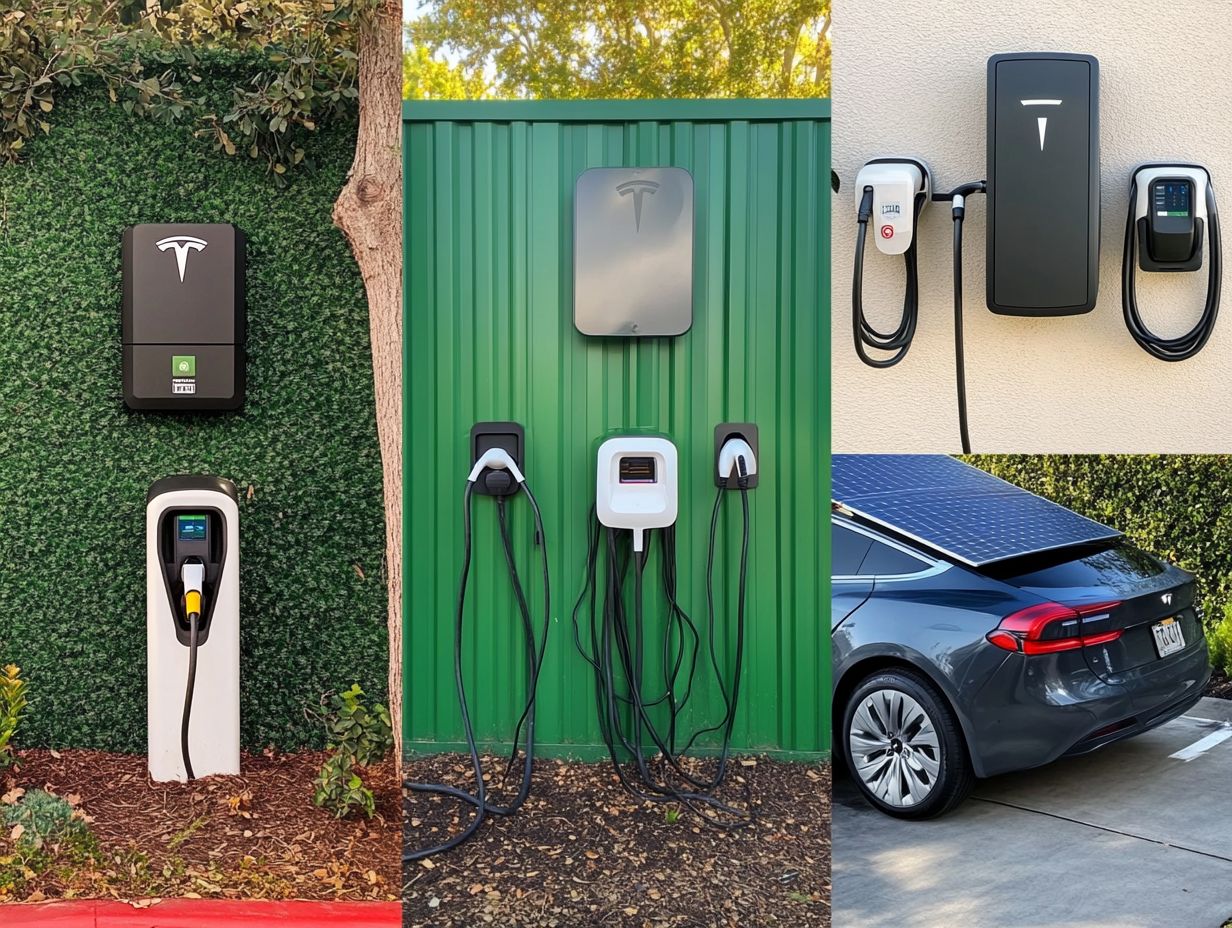
Owning an electric vehicle charger has many advantages. You can enjoy the convenience of charging your vehicle at home and save big while using renewable energy.
You ll never have to waste time searching for public charging stations again. Your car will be ready whenever you are.
Charging at home typically costs less than using public chargers, especially with extra fees. By using renewable energy, you also help protect the planet and reduce your carbon footprint.
What Are the Common Challenges with Electric Vehicle Charging?
While electric vehicles are becoming popular, you might face some challenges with charging. These include the quality and number of charging stations available, as well as range anxiety among drivers.
A patchwork of charging networks can be frustrating. Some stations may provide slow charging speeds, making long trips more stressful.
Innovative solutions are being developed. Ultra-fast charging stations can refill your battery in minutes instead of hours.
How Can You Save Money on Electric Vehicle Charging?
You can save money on electric vehicle charging using smart strategies. Consider home charging, renewable energy, and future innovations in EV charging solutions to optimize your charging times.
These methods can cut your electricity costs while supporting a sustainable future. Check out time-of-use rates for lower electricity prices during off-peak hours to maximize your savings.
Using solar energy reduces reliance on the grid and saves money on bills. For even more savings, energy management systems let you track usage and automate charging schedules.
What Is the Future of Electric Vehicle Charging Technology?
Electric vehicle charging technology is about to see remarkable innovations. Advancements in charging speed, improvements in infrastructure, and the seamless integration of renewable energy sources with advanced systems that manage energy use are designed to enhance both efficiency and convenience for you as an EV driver. Additionally, exploring 5 ways to promote sustainability in EV usage can further benefit your driving experience.
As more consumers embrace electric vehicles, the demand for strong and easily accessible charging stations is set to soar. Innovations like ultra-fast charging stations are transforming your experience, significantly reducing the time needed to recharge and making long-distance travel not just feasible but genuinely appealing.
The rollout of smart grid technologies allows for real-time energy management and optimization, ensuring a smooth energy flow, especially during peak usage times. By incorporating solar and wind energy into these charging networks, you re not just promoting sustainability; you re also seizing the opportunity to charge your vehicle with clean energy.
Get ready for a future where your driving experience is transformed by cutting-edge technology. These developments signal a shift towards a more interconnected and energy-efficient future.
Your Questions About Electric Vehicle Charging
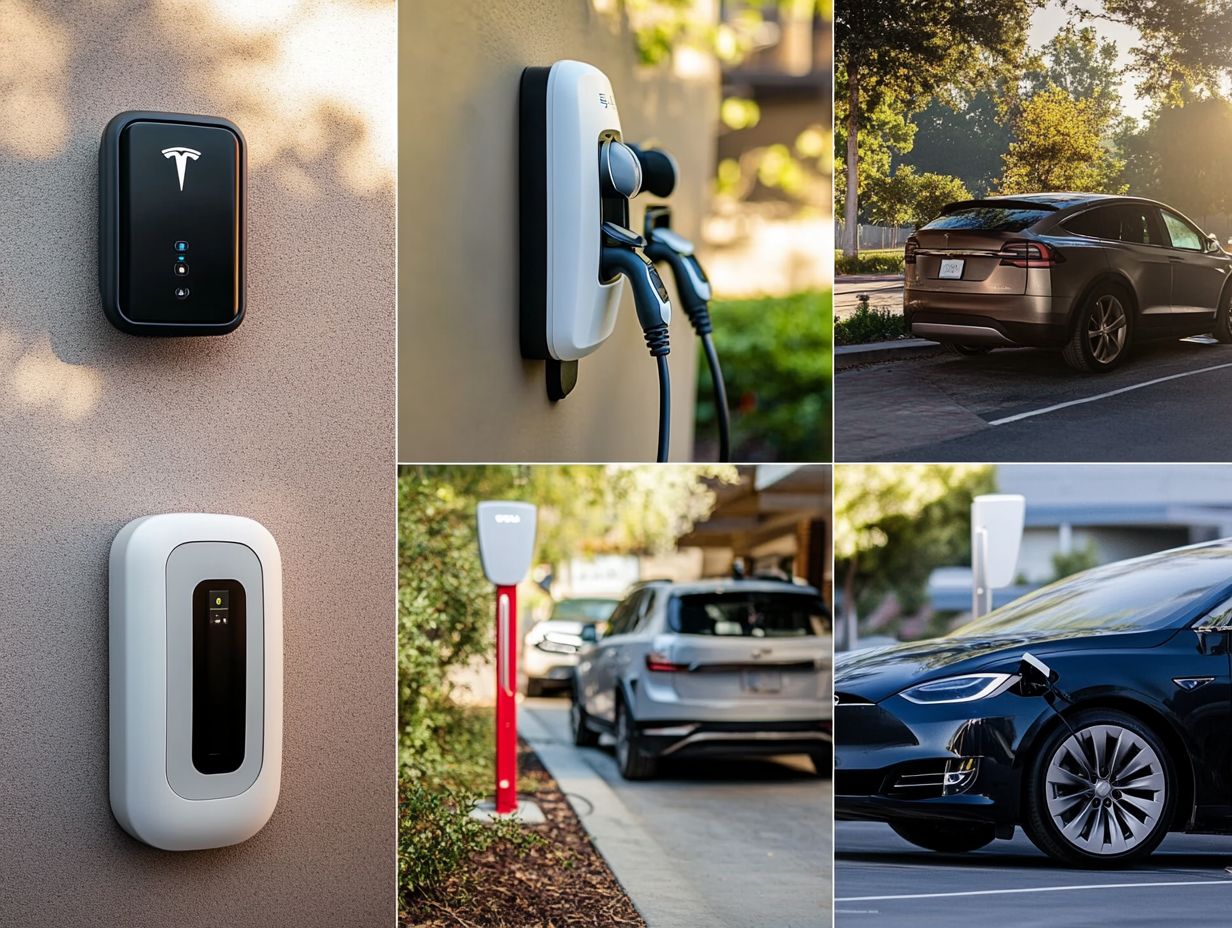
What are the different types of charging solutions available for electric vehicles?
There are five main types of charging solutions for electric vehicles, and you might want to consider the 5 must-have accessories for your electric car to enhance your experience: Level 1, Level 2, Level 3 (DC Fast Charging), Wireless Inductive Charging, and Solar Charging.
What is Level 1 charging and how does it work?
Level 1 charging involves plugging your electric vehicle into a standard 120-volt outlet. It is the slowest form of charging and can take several hours to fully charge your vehicle.
How is Level 2 charging different from Level 1 charging?
Level 2 charging requires a 240-volt outlet and is significantly faster than Level 1 charging. It can fully charge an electric vehicle in about 4 to 6 hours.
What is DC Fast Charging and how does it work?
DC Fast Charging, also known as Level 3 charging, uses higher voltage and current to charge an electric vehicle much faster than Level 1 or Level 2. It can charge a vehicle to 80% in about 30 minutes.
What is wireless inductive charging and how does it work?
Wireless inductive charging involves placing your electric vehicle over a charging pad that uses a magnetic field to transfer energy to the vehicle’s battery. It is convenient and eliminates the need for cords or plugs.
Can I charge my electric vehicle using solar energy?
Yes, solar charging systems are available for electric vehicles. These systems use solar panels to capture energy from the sun and convert it into electricity to charge your vehicle.

